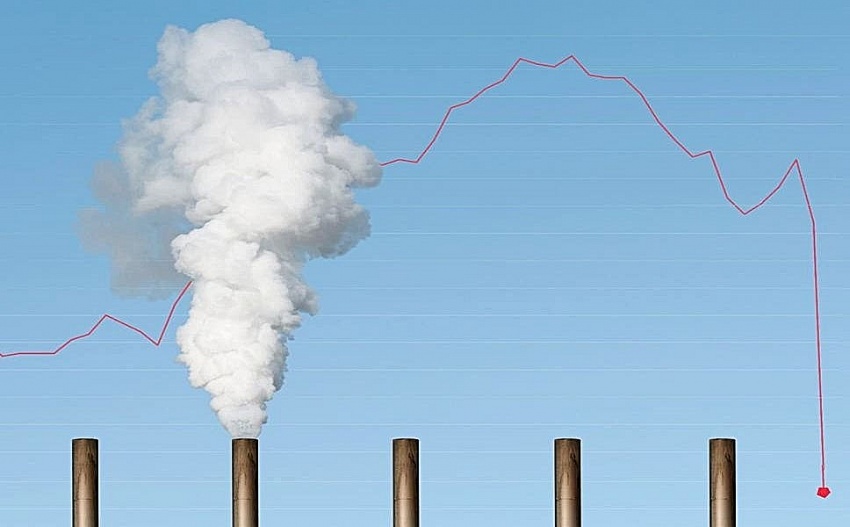VBF's environmental working group proposes carbon trading system
 |
| VBF's environmental working group proposes carbon trading system |
On February 21, Michael DiGregorio, head of the VBF'sEnvironment Working Group emphasised the proposal for the European Commission’s Carbon Border Adjustment Mechanism (CBAM), which is meant to contribute to the achievement of climate neutrality by 2050 and is expected to play an increasing role in trade not only with the EU but also other trading partners.
"We see opportunities in this for Vietnam to push forward its transition to technologies that lower carbon emissions and would encourage the government to cautiously accept the EU’s proposal with their own transition in mind. VBF member chambers and participants are willing to support these efforts with investment, technology, and finance," DiGregorio said.
According to the working group, the development of Vietnam’s Emissions Trading System (ETS) and carbon market will play a major role in this transition.
By creating a price for carbon tied to a periodically adjusted cap on emissions that aims to meet Vietnam’s goal of becoming a net-zero economy by 2050, the government can make clear that carbon-intense industries and sectors must transition to a lower-carbon economy or face competition from those who do.
At the VBF's technical session on February 18, the working group also issued three proposals to boost carbon credit trading.
The first is to separate emissions quota certificates and carbon offset credits. According to the working group, emissions certificates are priced based on scarcity due to the cap on emissions imposed by government policy.
Carbon offset credits are traded in an unlimited market. When the two types of instruments are treated as equivalent internationally transferable mitigation outcomes, the lower-priced carbon credits tend to bring down the price of emission allowance certificates. The net result would be lower incentives to reduce emissions as the cost of non-compliance can be treated as a cost of doing business.
Furthermore, the EU will not allow carbon credits to be used to offset the cost of CBAM certificates. Thus, while they have value in national accounting of emissions reduction, and are tradeable across borders for the same purpose, carbon credits cannot be used by businesses to reduce the cost of embedded carbon in products exported to the EU. ETS allowances and taxes paid through Vietnam’s Environmental Protection Tax, however, can be used to offset the cost of CBAM certificates.
“Some of our member businesses have been active in developing and trading voluntary carbon offsets since they were introduced under the Kyoto Protocol in 1997. Most recently, one of our member organisations has funded the expansion of lower methane-producing approaches to rice farming through the sale of carbon credits. We consider such approaches positive, market-oriented approaches to the reduction in greenhouse gas (GHG) emissions,” DiGregorio said.
“However, these are voluntary actions taken by businesses to reduce their own carbon footprints and, while they are internationally transferable, they cannot be certified and credited towards Vietnam’s contribution, nor can they be traded on its carbon market as equivalent to emissions allowances,” he said.
Regarding the proposal to set a 4-year target and annual reduction increment for emissions reduction, the working group noted that preparing a schedule for emissions caps facilitates this exchange between compliant and non-compliant businesses.
The third important proposal is to gradually expand the scope of facilities covered by the ETS.
“While we recognise the need for an inventory of GHG emissions from the large emitters included in the in the annex of Decree 06/2022/ND-CP on the reduction of greenhouse gas emissions and protection of the ozone layer, we would like Ministry of Natural Resources and Environment to consider gradually expanding the scale and sectors included in its inventories as a means of preparing these facilities for inclusion in the ETS,” he said.
Currently, the list includes only 2,605 large emitters in the industrial, transport, farming, and waste management sectors.
"The working group expects this list to grow as the ETS is implemented and carbon pricing increasingly becomes a trade issue. Including potential facilities in the inventory, even if their emissions are not counted and they are not required to purchase emissions certificates, provides a training opportunity for both the companies and accredited assessors. It also signals businesses to prepare for future inclusion in the ETS by reducing their own carbon emissions in advance," said DiGregorio.
What the stars mean:
★ Poor ★ ★ Promising ★★★ Good ★★★★ Very good ★★★★★ Exceptional
Related Contents
Latest News
More News
- Schaeffler reports strong early output from Dong Nai solar project (December 12, 2025 | 15:16)
- Forestry conference highlights biodiversity and sustainability goals (December 09, 2025 | 13:35)
- Home Credit honoured among top 10 sustainable companies in trade and services (December 09, 2025 | 12:18)
- SCG and seven member companies honoured in Top 100 Sustainable Businesses 2025 (December 08, 2025 | 09:00)
- Nestlé Vietnam pioneers sustainable development and promotes business connections (December 06, 2025 | 12:09)
- CSI 2025 highlights rise of Vietnam’s green champions (December 06, 2025 | 09:00)
- Acecook Vietnam named among top 100 sustainable businesses (December 06, 2025 | 08:00)
- Vietnam’s forest carbon credits draw global interest (December 05, 2025 | 17:41)
- Coro Energy to launch BESS Pilot in Vietnam (December 04, 2025 | 15:12)
- Vietnam strengthens energy storage pathway (December 04, 2025 | 15:05)

 Tag:
Tag:






















 Mobile Version
Mobile Version